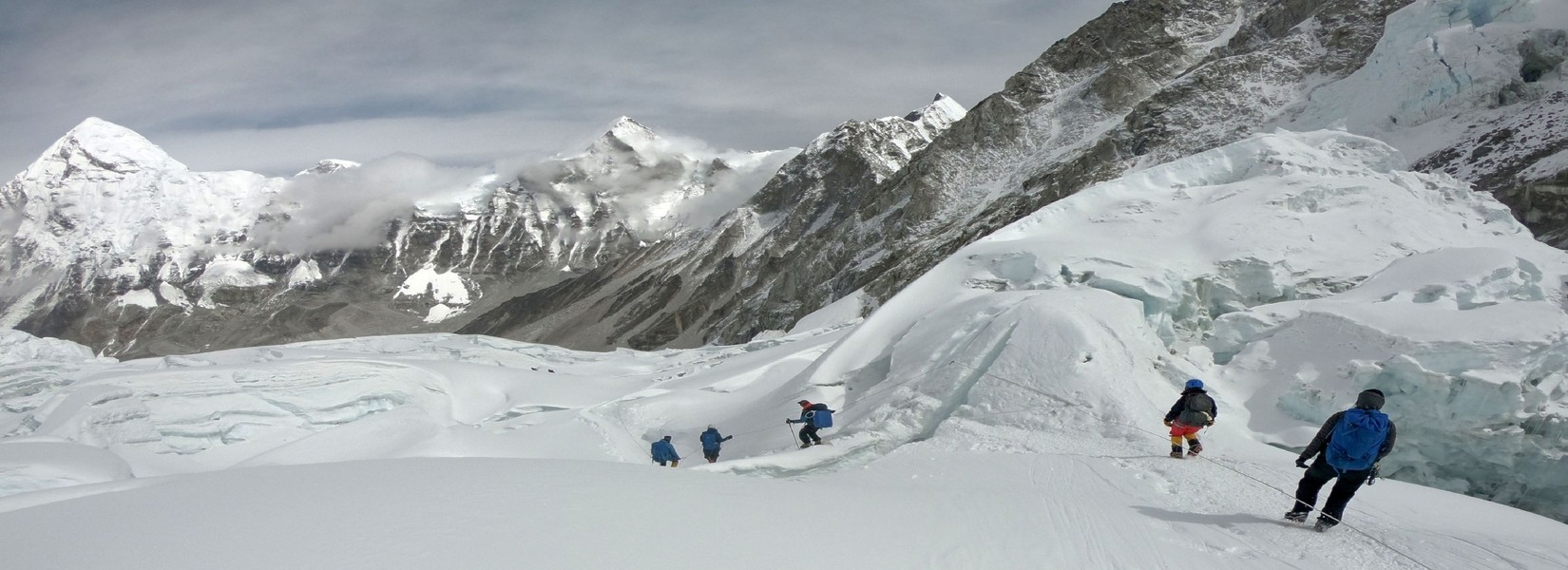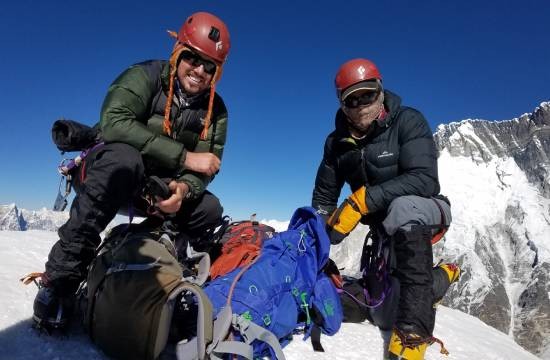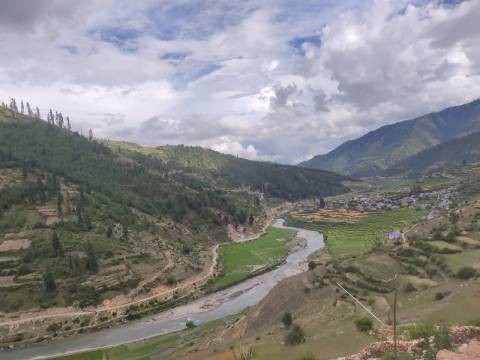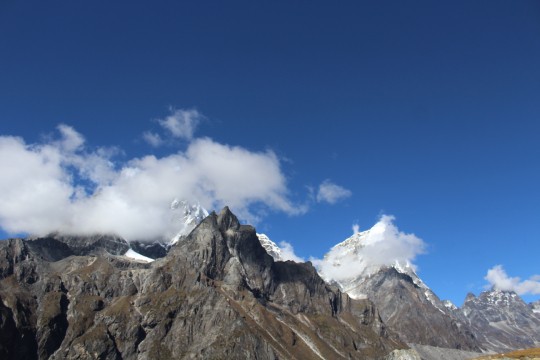Are you looking towards embarking on an amazing journey of unveiling the mystique of mountaineering and exploring the unparalleled experience of conquering the legendary Mt. Everest? If so, then join us as we explore the challenges, the rewards, and the untiring spirit that defines this remarkable expedition. Here we provide the dos and don’ts and how you should prepare yourself earlier to begin this journey.
Table of Content
Welcome to Magic Expedition and Tours, where extra extraordinary adventures come to life! Are you planning to conquer the highest peak in the world? Mt. Everest. Are you looking towards embarking on an amazing journey of unveiling the mystique of mountaineering and exploring the unparalleled experience of conquering the legendary Mt. Everest? If so, then join us as we explore the challenges, the rewards, and the untiring spirit that defines this remarkable expedition. Here we provide the dos and don’ts and how you should prepare yourself earlier to begin this journey.
Mount Everest is the highest mountain peak in the world standing proudly at an astonishing altitude of 8850 meters (20,035 feet) above sea level in Nepal, according to the national geographic site. It’s the highest point on Earth. The thought of conquering and reaching the highest peak of the world and standing tall amongst all sounds like a fairytale, however, with rewards comes some challenges. At Magic Expedition Travels and Tours, we understand the allure and complexity of this ultimate mountaineering feat, and we're here to guide you every step of the way.
Climbing Mount Everest is a once-in-a-lifetime experience that offers more than just a conquest of physical limits. It has become a popular expedition for mountain climbers. It is an opportunity to connect with nature in its purest form, witness landscapes of staggering greatness, and delve into the rich cultural tapestry of the Sherpa people. The Everest expedition presents a chance to embrace solitude amidst the vastness of the Himalayas, to test one's determination against formidable challenges, and to emerge transformed, with newfound strength and resilience.
There are various routes to reach Mount Everest, among them Magic Expedition and Tours offers a captivating route that includes a flight from Kathmandu to Lukla, then a trek of 10 to 12 days to EBC (Everest Base Camp) which is 17500 ft. You can get the details about getting to EBC. Most trekkers will spend weeks and months here while practicing acclimatizing to the altitude with rest and day hiking. While you are at EBC, you may listen to frequent avalanches coming down Nuptse, Lho La, and Pumori. This is the place that will determine your fate. It’s a place where most of the emotion takes place. Some people find it calming and making their dream come true while some climbers may have to return home without finishing the task. The route to Everest’s summit is not open every day of the year, which is something to keep in mind. There is a brief window of time that is safest which is from April to October as the climate is moderate during this time of the year.
Climbing Mount Everest: EBC Summit
Now, let us talk about what happens when you are finally ready to start your journey from the EBC toward the summit. You will stop in various zones/levels where we set our camps (camp I to Camp IV).
The first stop after the EBC is Camp 1, which is also called the Valley of Silence. It is about 20000-21000ft and takes about 5 to 8 hours to climb. You will have to cross various heart-pounding adventures to reach Camp I like a crevasse might open under you, an ice pinnacle can fall on top of you, or an entire area can collapse. So, this is where you must concentrate more and focus on getting out as quickly as possible. However, this place is where you will have your first glance at the sight of Everest so close. You rest here for a day and start your climb towards Camp II, which is about 21000 ft. You will rest here at the foot of the icy Lhotse wall. Camp II is much simpler than Camp I. It is also a place where you can start acclimatizing yourself walking around the Lhotse face, it will help you to breathe deeply and fast making your body capture more oxygen. After acclimatization and if you feel well and the weather looks good, you will start your next climb to Camp III which is also called Lhotse Wall and is about 22300 ft to 26300 ft.
Here, you will need most of your concentration powers. You will find various sliding deep icy slopes you need to climb to reach the next stop. The climb can be easy as well as harsh depending on how the weather is. At this point, you will be walking towards the Yellow Band and the Black Turtle which are those rocky and bumpy sections on the wall. After climbing from 6 to 8 hours, it will now take you to the last camp that is Camp VI also called Death Zone residing around 26000ft. Due to its altitude, some of the human bodies may not function properly. According to NCBI (National Library of Medicine), various deaths around this region may have been related to high-altitude cerebral edema due to high altitude. However, this point resembles a moonscape.
You will enjoy the beautiful sight of the sky closest to you. Currently, you mentally prepare yourself to climb the death zone. You take plenty of rest, dehydrate yourself and start to put all the gear together in an organized manner for the final part of the adventure. Lastly, it’s time to conquer the top of the world.
Climbing Mount Everest is an extremely challenging and physically demanding endeavor that requires a high level of skill, experience, and preparation. It is widely considered one of the most difficult mountains to climb in the world. Here are some factors that contribute to the difficulty of climbing Mount Everest:
-
Altitude: Mount Everest stands at an elevation of 8,850 meters (29,035 feet) above sea level, making it the highest peak on Earth. With the increase in altitude, most climbers may experience a significant decrease in oxygen levels, which can lead to altitude sickness and other health risks. The human body is only capable of remaining indefinitely up to 19000 feet. As climbers move higher than 19000 feet, their oxygen intake reduces leading to several illnesses that affect heart, blood, or brain function.
-
Extreme weather conditions: The weather in the Everest region or any mountain area is unpredictable. High winds, extremely cold temperatures, and blizzards are common, making it essential for climbers to be well-prepared and equipped to withstand harsh conditions. With the cold temperature and high altitude, frostbites are commonly seen and as mentioned earlier the heart finds it difficult to pump blood around the body to deliver oxygen. The only drawback is it’s heavy to carry around and is quite expensive. However, tanks of oxygen are used during the climb.
-
Physical and mental endurance: Physical fitness and stamina are the most required if you ever thought of Climbing Everest and for that climbers often spend several weeks or even months on the mountain, gradually acclimatizing to the high altitude. One can also get used to the altitude, the geography, etc. by planning on doing some easy trekking like Manaslu, Annapurna etc. Climbing itself involves long, tough days of persistent physical activity and requires mental resilience to overcome mental and physical challenges.
-
Technical climbing skills: For first-time climbers, it’s very important to know about the equipment required for climbing any mountain. If you want more information on equipment, you can visit Trekking Gares. Climbing Everest involves various technical aspects, such as traversing steep slopes, navigating crevasses, and using climbing equipment like crampons, ropes, and ice axes. Climbers need to have advanced mountaineering skills and experience to safely ascend and descend the mountain.
-
Diet: As Mount Everest gets climbers from various parts of the world, sometimes the food that we get around the Himalayan regions is not suitable for the climbers if they are not mentally prepared. A good diet is always necessary to remain active and have stamina. The typical Nepali meal course is available along the trail which includes rice, dal/lentils, vegetables, and pickle,s, etc. which is also called “Dal Bhat”. There is a saying in Nepal:” Dal Bhat power 24 hours”. Also, climbers can find hot tea and water along the trail to keep themselves hydrated and warm along the way. You should also carry as many protein snacks as possible and some vitamin supplements to remain active during your expedition.
After reading the above factors, one shall not underestimate the given factors if you plan to climb Mount Everest. Climbing Everest requires extensive preparation, physical fitness, mountaineering experience, and a willingness to take on significant risks. Many climbers spend years honing their skills and gradually ascending other challenging peaks before attempting Everest such as other basecamps like Annapurna, Manaslu, Langtang, etc. Proper training, guidance from experienced mountaineers, and adherence to safety protocols are crucial for a successful and safe Everest expedition.
At Magic Expedition and Tours, we understand the magnitude of the Everest region trek challenge and the importance of thorough preparation. We are very happy to provide the guidance, support, and expertise you need to overcome any obstacles and prepare you to achieve your summit dreams. We are committed to creating a transformative and hassle-free experience for every trekker. Our services include:
-
Expert Guidance: Our experienced mountaineering guides are there to support and mentor you every step of the way. With their deep knowledge of Everest and their passion for adventure, they will ensure a safe and fulfilling expedition.
-
Logistics and Equipment: We take care of all the intricate logistical details, including permits, transportation, and equipment. You can trust that we provide top-quality gear and supplies, allowing you to focus on the journey itself.
-
Accommodation and Cuisine: Throughout the trek, we provide comfortable and cozy teahouses and lodges, carefully selected to provide rest and rejuvenation. Delicious Nepalese meals are prepared and catered to a range of dietary preferences and requirements along the trails.
-
Safety and Support: The well-being of our trekkers is our highest priority. We maintain a comprehensive safety protocol, including regular health check-ups and emergency response systems. Our support staff and porters are dedicated to ensuring your comfort and safety throughout the expedition.
Conclusion: Conquer Mount Everest is an Adventure of a Lifetime
In conclusion, boarding a journey to conquer Mount Everest is an adventure of a lifetime, one that pushes boundaries instills resilience, and reveals the awe-inspiring beauty of nature. However, the adventure requires extensive preparation physically and mentally as well as financially. With Magic Expedition and Tours as your trusted companion, you can rest assured that every aspect of your expedition, from preparation to the summit, will be meticulously taken care of and you can have a wonderful life adventure. We will help you and guide you from the very beginning with all the information about logistics, equipment, accommodation, safety, and anything necessary to ensure you make your summit dream a reality and provide a truly unforgettable experience.



